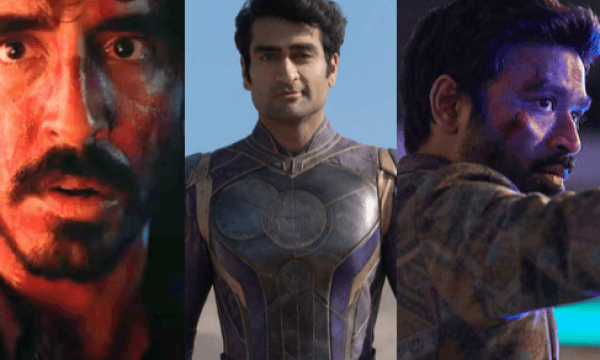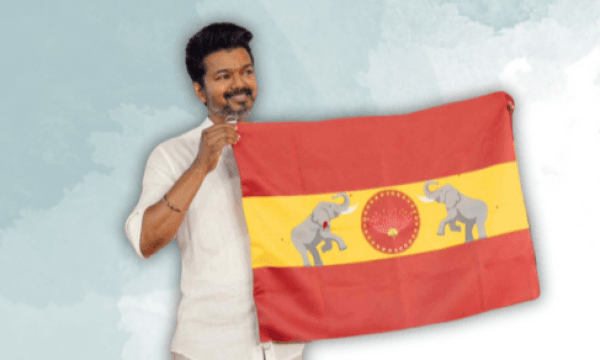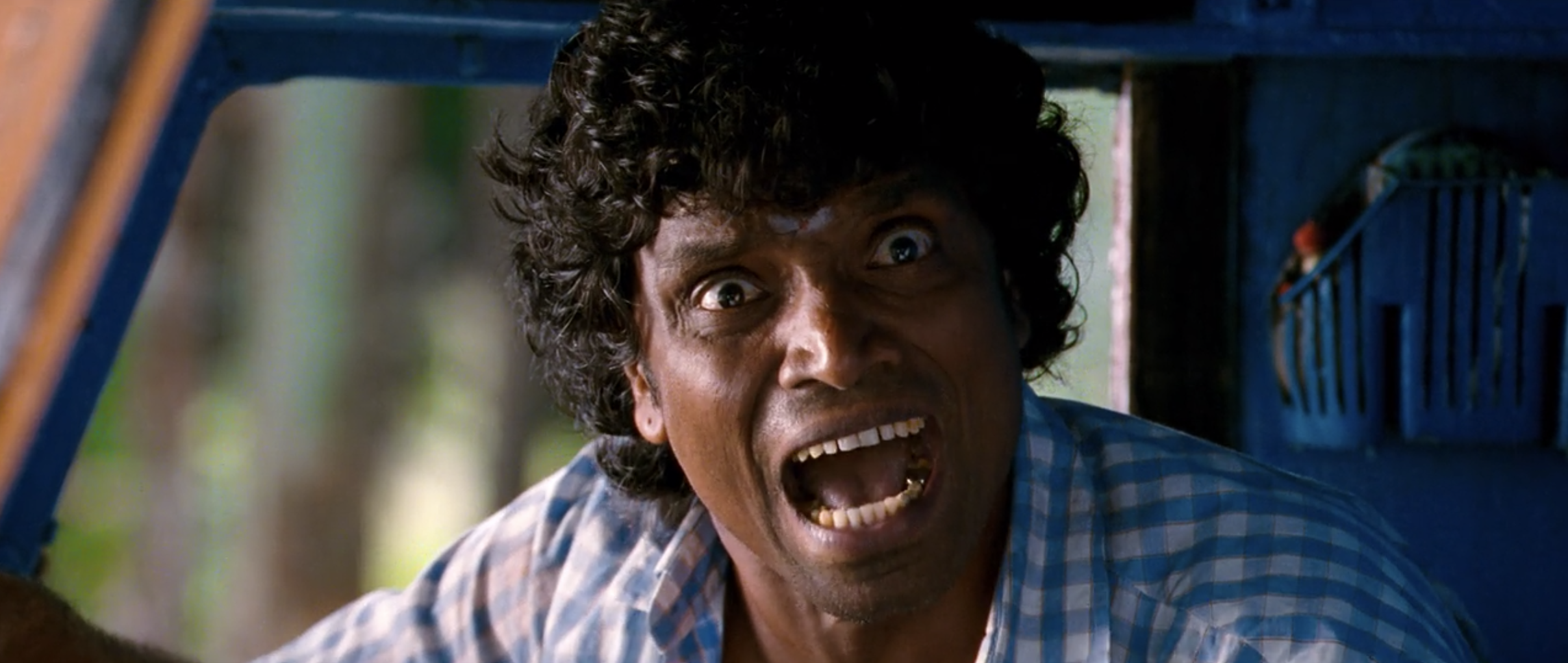
Originally published on Medium on 27 October 2019.
About a year ago, I was lying in a cramped Artesia living room with my cousins to watch the latest Oscar-nominated Dev Patel film: Lion. It was a powerful tale — a small, brown-skinned boy from Madhya Pradesh, now named Sheru “Saroo” Brierley, went missing, only to find himself in the arms of a white family from Australia. As he reached adulthood, he turned to the latest technologies and faded childhood memories to discover both who he once was and where he once lived, and the film’s final moments (spoiler alert) showed his reconciliation with his mother. While I was touched by the poignant film, a particular moment gnawed at me: somewhere between Saroo’s transition from childhood to adulthood, his skin color transitioned as well: the brown-skinned, dirtied Indian orphan became this happier, paler, English-literate Australian man. Those subtle implications — negligible to some — are by no means unusual film tropes. And while the actors of both young and old Saroo Brierley (Sunny Pawar and Dev Patel, respectively) are of north Indian origin, the juxtaposition of Brierley’s old and new physical appearances to highlight the assimilation of a once-orphaned Indian boy related significantly to what I had seen in north Indian cinema, despite the film being produced by Western film companies. The unchallenged use of darker skin to denote inferiority was reminiscent of the age-old Madrasi stereotype: an anti-Tamil stereotype often applied to all south Indians due to the legacy of the colonial Madras Presidency.
IMAGE DESCRIPTION: This scene from the 2016 Hollywood movie Lion depicts a young Saroo Brierley, played by actor Sunny Pawar, with dirt on his face and a dusky complexion. He is isolated and looks toward the camera. Photo from Time Magazine.
The Madrasi has some characteristics that appear to be monolithic: culturally backward, sexually-deviant, often with a highly-distinctive accent and a lengthy surname to distinguish them from their “literate,” “civilized,” and “normal” Hindi counterparts. Physically, the features that Tamils are discriminated for — darker skin, thicker curls, flatter noses, and bigger lips — are often presented in conjunction with the Madrasi trope.
Nevertheless, the Madrasi is deemed other in a variety of ways. The Madrasi may be a short, happy-go-lucky nerd. The Madrasi may be a large, Ravana-adjacent demon. And even in Tamil media, we see our own form of the Madrasi emerge: stereotypes against darker-skinned Tamil women, especially those from oppressed caste backgrounds, materialize on-screen and influence an uncritical populace that fails to recognize that the bigotry we consume often comes at our own expense.
Perhaps what is most compelling about the politics of representation in south Asian-America is that the dichotomy of south Asian stereotypes — violently subhuman or model minority — is so keenly evocative of the dichotomy of south Indian stereotypes — foolishly easygoing or recklessly aggressive, reduced always to a flattened identity.
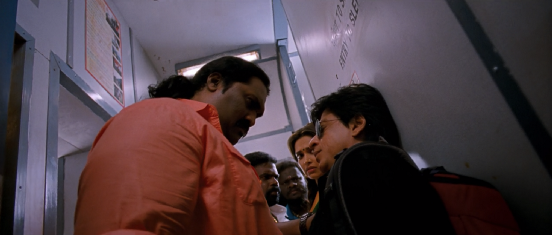
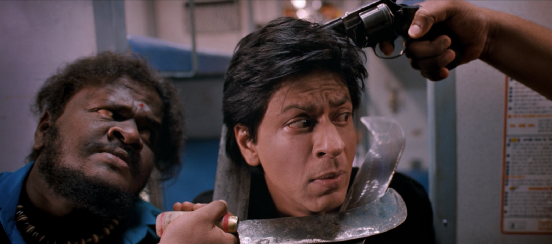
IMAGE DESCRIPTION: Beloved north Indian actor Shah Rukh Khan (or SRK) is depicted here as Rahul Mithaiwala, a man who accidentally boards the “Chennai Express” from Mumbai to Rameswaram and is surrounded by the dark-skinned, sickle-wielding Tamil henchmen of mafia leader Durgeshwara Azhagusundaram. These shots are from the 2013 Bollywood action-comedy film Chennai Express.
One of the first parallels I noted between Bollywood’s south Indian and Hollywood’s south Asian was actually one of the first uses of the Madrasi stereotype in north Indian film and the most infamous south Asian stereotype in the United States: Master Pillai from 1968’s Padosan and Apu Nahasapeemapetilon from The Simpsons. Both of these characters are shown to be inexplicably talented — Apu has a Ph.D. in computer science while “Masterji” is skilled at his own craft — yet they are nonetheless depicted as dimwitted, oblivious, and to the demographics that these caricatures were created for, “lovable.” Master Pillai was portrayed by a north Indian actor, Mehmood Ali, while Apu was portrayed by a white American actor, Hank Azaria.
IMAGE DESCRIPTION: Master Pillai from Padosan (1968) and Apu from The Simpsons (1989-) are depicted side-by-side, smiling outward.
Apu represents almost precisely what the south Indian represents in the north Indian imagination: he has a curiously-long last name (Nahasapeemapetilon), his thick accent and dark skin color distinguish him fully from his surrounding characters, and unsurprisingly, he has a Ph.D. in computer science.
There’s also the south Asian stereotypes I personally grew up on — Ravi from Jessie and Baljeet from Phineas and Ferb — whose innate characteristics mirror largely what north Indians perceive as the classic south Indian.
IMAGE DESCRIPTION: Ravi from Disney Channel TV series Jessie (2011–2015) and Baljeet from Disney Channel TV series Phineas and Ferb (2007–2015) are presented side-by-side.
Ravi’s name was also long: in full, it was Ravi Kupta Balasubramanium Ross. His accent was thick despite his upbringing in the United States. Additionally, Baljeet’s skin was of a lush brown shade. His hair was thick and curly. And of course, he also shared a deeply stereotypical accent to distinguish his character from his white peers. One of my most memorable moments observing his character was when he sang about needing perfect grades under the backdrop of Orientalism; see below.
All of these characters — Apu, Ravi, and Baljeet — have specified north Indian origins. Apu is from West Bengal, Ravi is from the Hindi belt, and Baljeet is from Punjab, despite the south Indian stereotypes that prevail in their distinct portrayals. This provides an interesting parallel to the lack of cultural relevance that south India, geographically, has in south Asia: similar to how the geographic origins of all south Indians are often reduced to Tamilnadu, the geographic origins of all south Asians in the United States are reduced to northern India.
Cartoons and caricatures aside, I’m severely unsurprised by the assumption that we exist in a new desi America: from images of Hasan Minhaj and Lily Singh regularly adorning news media outlets to Priyanka Chopra’s Quantico, Avan Jogia’s Twisted, and Riz Ahmed’s The Night Of, it appears that we see south Asians everywhere now. But this modern phenomenon of nuanced and complex south Asian-American representation after decades of the monolithic American Madrasi does not fully appear to be inclusive — I have yet to see Sri Lankans, Nepalis, Afghans, and Bangladeshis rise in the ranks of south Asian-American media, and Aziz Ansari and Mindy Kaling aside, south Indian and Tamil representation appears to be on a steady decline, assuming it ever fully existed in the first place.
While I do see a brighter future for Tamil representation — especially in Kaling’s upcoming Netflix series starring Eelam Tamil actress Maitreyi Ramakrishnan — for now, I’m discontent. South Asian-Americans must recognize that the stereotypes used against us as a whole are often the same stereotypes continued against the minorities within our diverse communities; there would be no Apu without Master Pillai, and there would be no American Madrasi without the original.
Looking to create your love story? Join the other couples who have dated and got married through myTamilDate.com!
"How a Message on myTamilDate.com Led to an Engagement for Lavanya & Vitharan"








